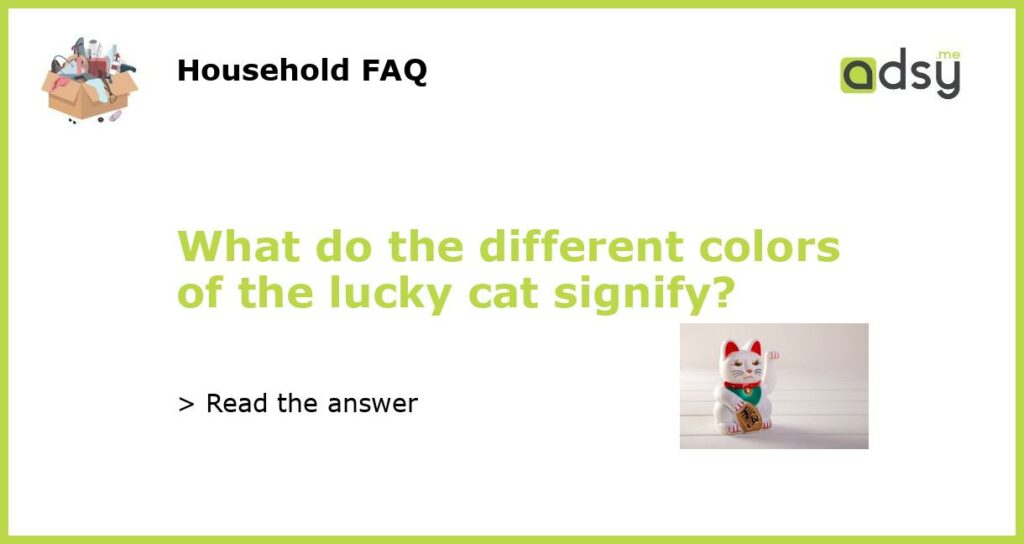The Origin of the Lucky Cat
The lucky cat, also known as maneki-neko, is a common Japanese figurine believed to bring good luck to its owner. Its origins can be traced back to the Edo period in Japan (1603-1868) and has since become a popular talisman in many Asian cultures. The cat is usually depicted with one or both paws raised, beckoning good fortune towards the owner.
The Different Colors of the Lucky Cat
The lucky cat comes in different colors, each with a specific meaning. The most common colors are white, black, gold, and red. The meaning behind each color varies depending on the culture and tradition it represents.
The Significance of White Lucky Cats
The white lucky cat is often associated with happiness, friendship, and positivity. It is believed to bring good luck and fortune to its owner, especially in business ventures. It is also said to ward off negative energy and evil spirits, promoting peace and tranquility in the home or workplace.
The Symbolism of Black Lucky Cats
The black lucky cat is less common than the other colors and is generally associated with warding off evil spirits and bad luck. It is said to provide protection to the owner and ensure safety and good health. In some cultures, the black cat is also regarded as a symbol of wealth and prosperity.
The Meaning Behind Gold and Red Lucky Cats
The golden lucky cat is often associated with wealth and prosperity. It is believed to bring good fortune in financial matters and is commonly found in shops and businesses. The red lucky cat, on the other hand, is associated with love, relationships, and happiness. It is said to promote good luck in matters of the heart and is often given as a gift to couples.






